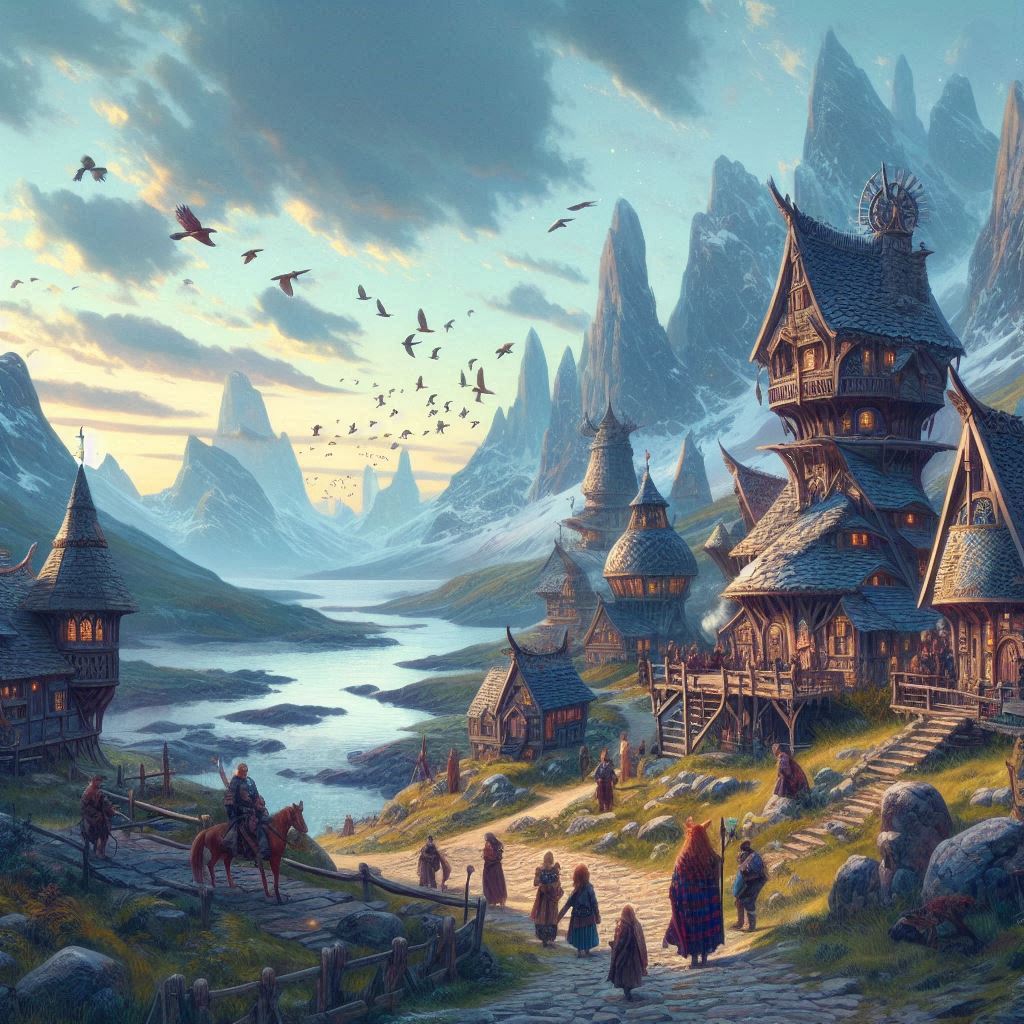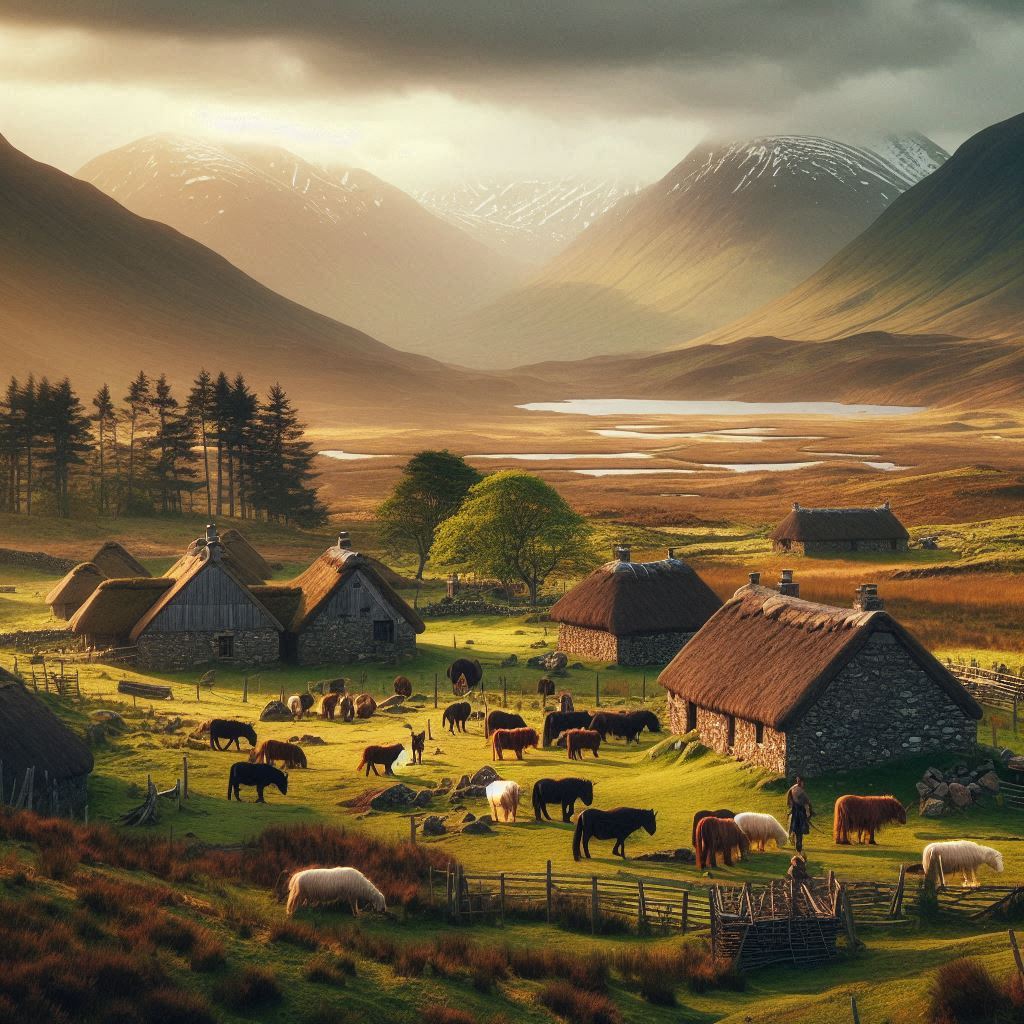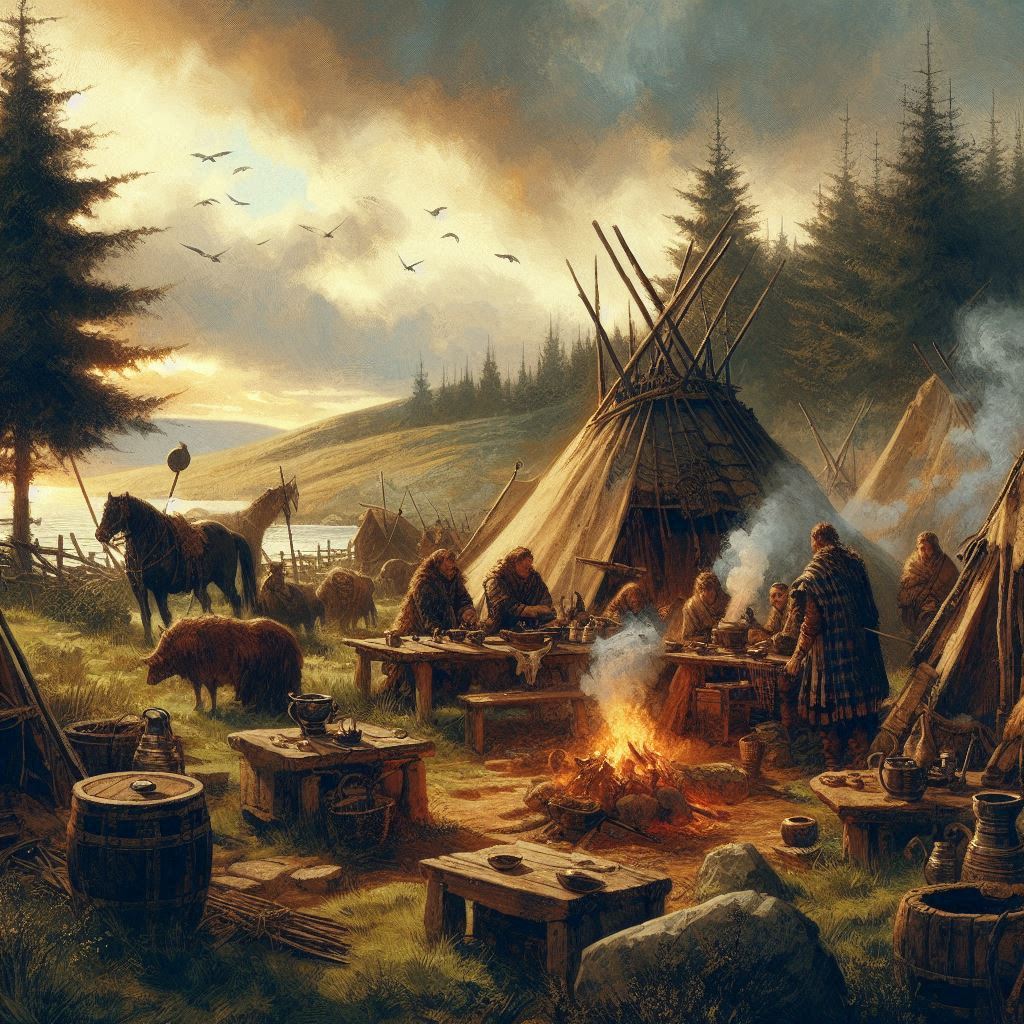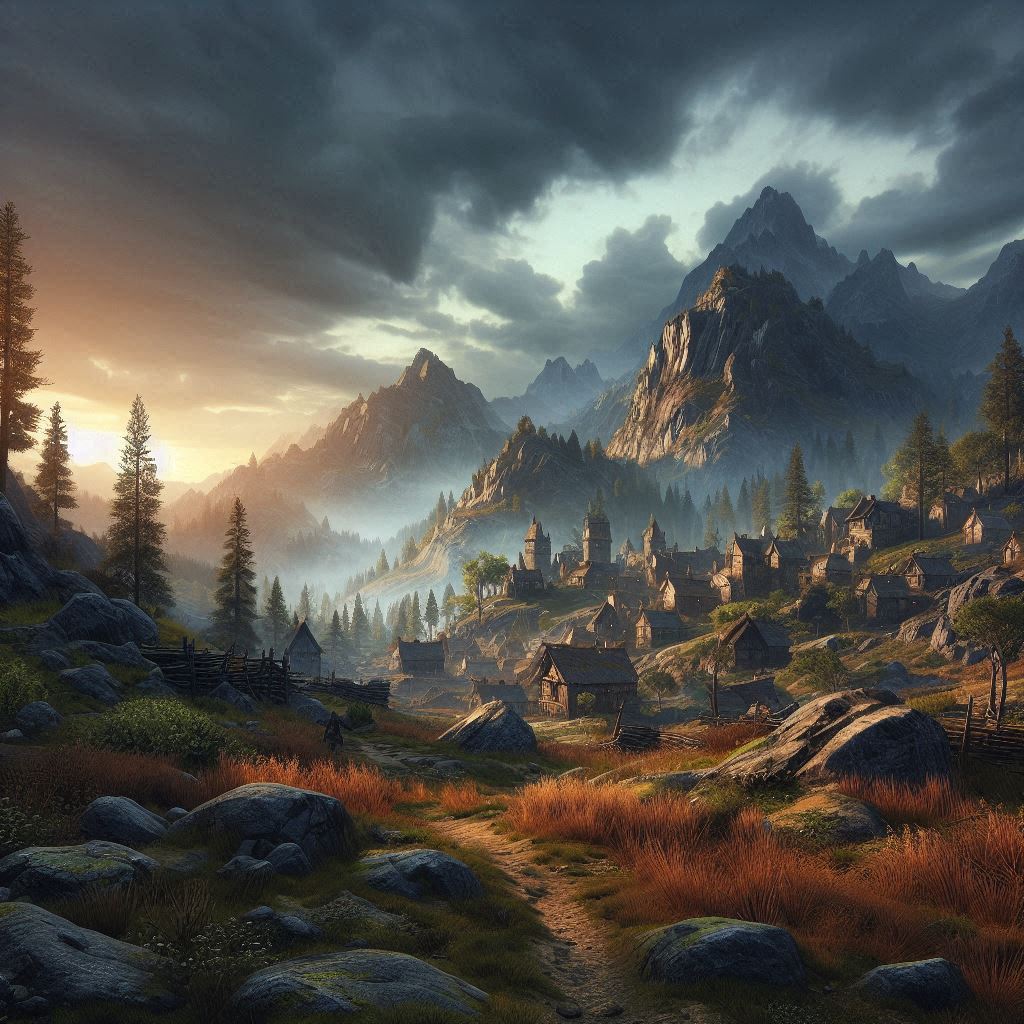Highland culture
CULTURES SKILLS
- Ambush
- Camouflage
- Climbing
- Cookery
- Direction Sense
- Foraging
- Hunting
- Jumping
- Mining
- Read Tracks
- Set Traps
- Stalk & Hide
- Stone Evaluation
- Stone Lore
- Trap Building
- Caving
- Distance Running
Legend
“Amidst the chilling winds and rugged peaks, they thrive not for riches but for survival and kin, ever vigilant for the flicker of distant beacons.”
Description

Highlanders are a hardy, resilient people who have adapted to the harsh climates and rugged terrains of their mountainous homeland. They value strength, endurance, and independence while holding a profound respect for the wildlife that sustains them. Their hunting techniques, tracking skills, and associated rituals are vital for their survival. A code of honour emphasising loyalty, bravery, and mutual support governs their actions and interactions.
Lifestyle: Highlanders are deeply connected to their rugged landscapes. They are exceptional storytellers, skilled trackers, hunters, trappers, gatherers, herders, farmers, and survivalists. Disputes are often resolved through combat or warfare, reflecting their fierce and self-reliant nature. Their daily lives revolve around the demands of their environment, from tending to livestock and farming to defending their homes from external threats.
Diet: Hill cultures eat a diet based on small-scale farming, including grains, root vegetables, and legumes. They also hunt game and keep livestock such as goats or sheep. Their diet is hearty, designed to sustain them in rugged terrain where farming is challenging and weather conditions can be unpredictable.
Traditions and Stories: The oral traditions of the Highlanders are rich with stories of heroic figures who braved the wilderness and overcame monumental challenges. These tales serve as lessons and inspiration for younger generations, teaching them the values of bravery, resilience, and loyalty. Seasonal festivals and gatherings are times for storytelling, music, and dance.
Marriage Pattern: Marriage is monogamous, and marrying outside one’s immediate family is a strict requirement to avoid inbreeding and strengthen clan alliances. Wedding ceremonies are elaborate, featuring rituals that celebrate the union of two families and their commitment to the clan.
Religion: Highlanders maintain a spiritual connection to the land and its natural elements. Their rituals are based on interpretations of the “walking gods” and the “true gods,” involving offerings to the spirits of mountains, rivers, and forests for protection and abundance. Oral traditions are key in preserving histories and laws, and the clergy are both revered and feared.
- Religious system: Shamanism, with spiritual leaders who mediate between the human and spirit worlds.
- God-Mortal Interaction: The worship is with strong emphasis on family lineage and heritage.
- Rituals: sacrifices to mountain gods for protection, coming-of-age ceremonies, and festivals celebrating the harvest.
- Impact on Society: Religions are a source of conflict among different groups. Priests, shamans, or other religious leaders often hold positions of power and aid in shaping legal codes and social norms.
Skjald Sigurd
Craftsmanship: Highlander craftsmanship includes intricate leatherwork, bone carvings, and woven textiles, reflecting the natural resources available in their environment. These items, while often crude, are functional and carry aesthetic appeal for those who appreciate rustic artistry.
Clothing & Decoration: Highlanders wear durable, rugged clothing made from thick wool and animal hides. Their attire includes tunics, leggings, rough overcoats, and short fur cloaks, all designed for practicality and protection against the elements. Clothing is often in earthy tones, dyed using natural sources, and adorned with symbols significant to their clan.
Armor: Highlanders typically wear minimal armour, favouring soft leather for its flexibility and lightweight properties, which are essential for navigating the rough terrain.
Weapons: Their weaponry includes broadswords, clubs, daggers, handaxes, javelins, short bows, and spears. Each weapon is crafted for both hunting and combat, reflecting their dual need for survival and defence.
Special Items: Their workmanship, although rustic, has a unique aesthetic appeal. Items are often made from materials that are not long-lasting, such as bronze, copper, tin, leather, yarn, and wood, but are valued for their craftsmanship and beauty.
Skjald El Mary
Time; Generally runs cyclical, following the agricultural seasons and the rhythm of the mountains. However, celestial events and significant clan events may result in recurring mountain festivities.
Accomplishment and achievement: Tribe-oriented s survival in difficult conditions, mastering hilly terrain, and homeland defence. Success is tied to the well-being and prestige of clans or families, with individual contributions to clan strength resulting in personal honour and prowess.
Authority Interaction: Respectful but independent; clan leaders are often chiefs, druids, or elders who have to continually demonstrate their value while respecting traditional customs. Strong regard for clan hierarchies, allegiance, and traditions, while maintaining a strong feeling of independence.
Fears & Inabilities: Superstition is widespread, with a particular fear of spirits and the supernatural. These beliefs influence their behaviour and rituals.
Mien: The culture has a medium influence, and can cultivate a strong, independent demeanor.
Mannerism: Highlanders are often suspicious and self-centered but also vocal and animated. They love to talk, laugh, and sing, particularly during social gatherings.
Prejudices: They generally dislike Nomad, Nobility, and Urban.
Skjald Vinotis
Resistance: Highlanders are resilient to the challenges posed by their environment. Their rugged lifestyle builds robust immune systems
Disease Resistance: Living in highlands somewhat limit disease exposure, but close-knit communities might still spread infections, so they have moderate resistance.
Poison Resistance: Their familiarity with natural toxins in the rough terrain provides them with low to moderate poison resistance.
Remedies: They utilise a combination of herbs and minerals found in their highland environment for preventive and healing purposes.
Skjald Kazumix
History

Highlander cultures have a history of isolation, fostering unique traditions and languages. Conflicts with lowland peoples or rival highland clans are common, shaping their warrior culture and societal structure.
Skjald Sejrik
Cartography

Highlanders thrive in the unforgiving conditions of mountain roughlands and foothills. They live in extended families within fortified clanholds, while some reside in remote, hard-to-reach locations as shamans or hermits.
Skjald Ulrich
Organisation

Clan-based societies dominate, emphasising loyalty and kinship. Leadership typically lies with the clan chief, a skilled warrior, or a wise elder. Strong community bonds are crucial, with villages resembling large extended families.
Skjald El Mary
Special

Highlanders possess unique skills in mountain warfare and have a deep knowledge of mountain herbs and medicinal plants. Their connection to the spirits of the mountains is integral to their culture, influencing their rituals and daily practices.
Skjald Valgrif
Last Updated on 2024-10-20 by IoM-Christian
